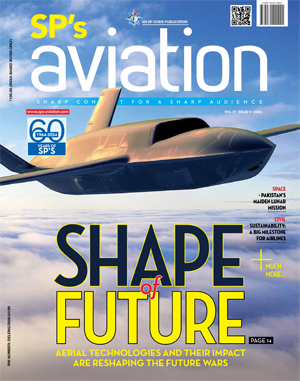INDIAN ARMED FORCES CHIEFS ON
OUR RELENTLESS AND FOCUSED PUBLISHING EFFORTS

SP Guide Publications puts forth a well compiled articulation of issues, pursuits and accomplishments of the Indian Army, over the years

I am confident that SP Guide Publications would continue to inform, inspire and influence.

My compliments to SP Guide Publications for informative and credible reportage on contemporary aerospace issues over the past six decades.
HeliNa helicopter version arrives
 |
By Lt. General P.C. Katoch (Retd) Former Director General of Information Systems, Indian Army |


Photo Credit: SP Guide Pubns / Anoop Kamath
At first glance, the name HeliNa appears synonymous with Helena - the devious Greek queen mother in the ongoing TV serial Chakravarty Ashok Samrat. But though HeliNa is the helicopter version of the indigenous fire and forget missile ‘Nag’, it is as vicious as the mentioned Helena. On July 13, three round trials of HeliNa were conducted at Chandhan firing range in Jaisalmer, Rajasthan. The missiles were test fired from the Rudra which is the armed version of HAL’s Dhruv helicopter equipped with forward looking IR and TI sights interface, a 20 mm turret gun, 70 mm rocked pods and equipped to carry ATGMs and Air-to-Air missiles. Two out of the three missiles fired hit the target successfully at a range of seven kilometers, with one missing the target.
An earlier developmental trial of helicopter launched Nag (HeliNa) was conducted from a defence base off the Odisha coast in December 2013. The short range weapon was test-fired by the missile handling unit of HAL from the launching complex-II of the Integrated Test Range (ITR) at Chandipur-on-sea. This was actually the third trial of an upgraded and air version of surface-to-surface missile Nag. Earlier two trials of this third generation ‘fire and forget’ missile was conducted from the Pokhran firing range and claimed as successful. The test firing at Pokhran was seeker evaluation trials for anti-tank missile Nag in hot desert conditions of Rajasthan. These trials were against both moving and static targets for different ranges of 2.8 km and 3.2 km to evaluate the performance of an improved version of Imaging Infrared (IIR) seeker. While Nag missile has a maximum range of four km, the seeker proved to be accurate only up to 2.5 km in extremely hot conditions in the trials conducted last year. The missile could strike its targets up to four km but in extreme heat conditions, the missile could not reach targets beyond three km. The Army also raised reservations against the weight of the missile since Nag weighed around 40 kgs that made reloading difficult.
The DRDO has been working to meet the demands from the Army; reducing the weight of the missile in its next versions - Mark-II Nag and also to equip it with a seeker with high resolution which can distinguish the target from the other ground objects at a distance of up to four km. In June 2014, two-round trials of helicopter launched Nag (HeliNa) were conducted by firing these missiles from an IAF helicopter near the ITR at Chandipur-on-sea. While one missile reportedly failed to give expected results, the other was successful. This was fourth and fifth trial of the upgraded missile Nag. Earlier three trials of this third generation ‘fire and forget’ missile was conducted from both the Pokhran firing range and ITR and dubbed as successful. The trial conducted during the noon was reportedly unsuccessful as the missile failed to hit the target as expected. However, the second test carried out in the afternoon was successful.
The Army has been awaiting the induction of the Nag missile since long. The missile, which is under development since 1980s, had earlier failed during user trials from Mahajan firing range in Rajasthan in 2012. The missile was then fired with a modified carrier NAMICA (Nag Missile Carrier), a modified BMP-2 ICV equipped with a thermal imager for target acquisition. The Nag missile can strike its targets up to four km but in extreme heat conditions, the missile has been underperforming. The DRDO is working to fix this problem. While Nag missile has a maximum range of four km, the HeliNa has an extended strike range of about eight km. HeliNa is air-to-land version of Nag missile, which is one of the five missile systems developed by DRDO under the Integrated Guided Missile Development Program (IGMDP). Once inducted in the Armed Forces, the HeliNa missile will be integrated with the weaponized version of the Advanced Light Helicopter (ALH) Dhruv and the light combat helicopter produced by Hindustan Aeronautics Ltd (HAL). It can be launched from twin-tube stub wing-mounted launchers on board the armed light combat helicopters and advanced light helicopters. This missile is airborne and has a lock-on-after system which helps in extending its range up to nearly eight km.





